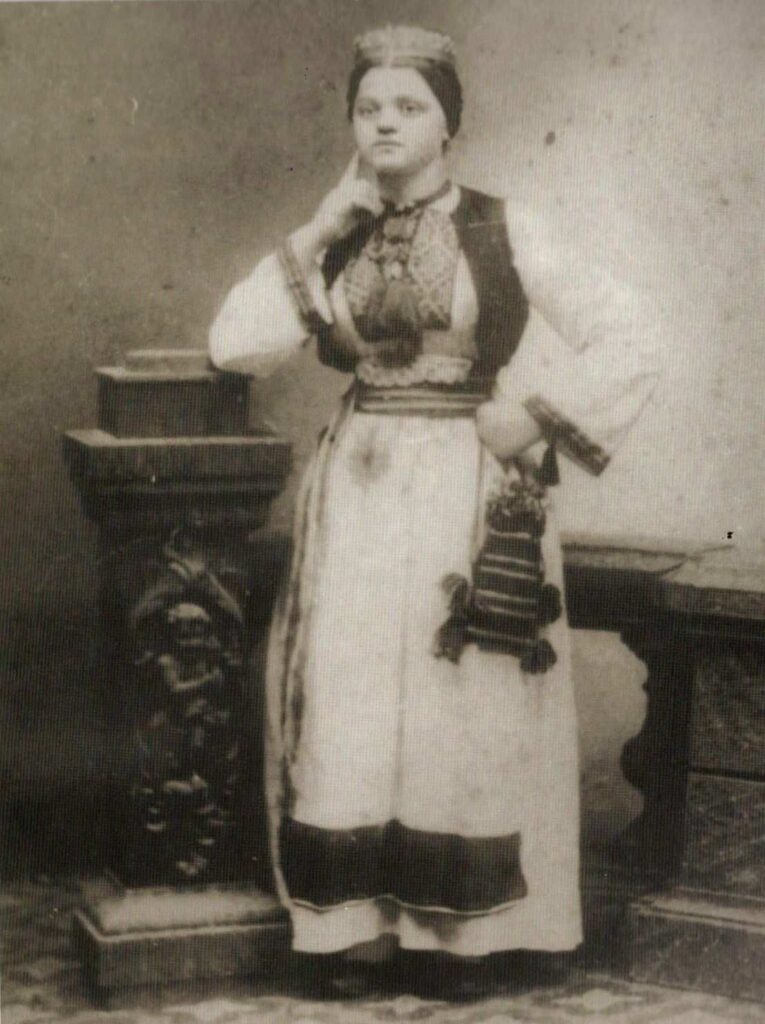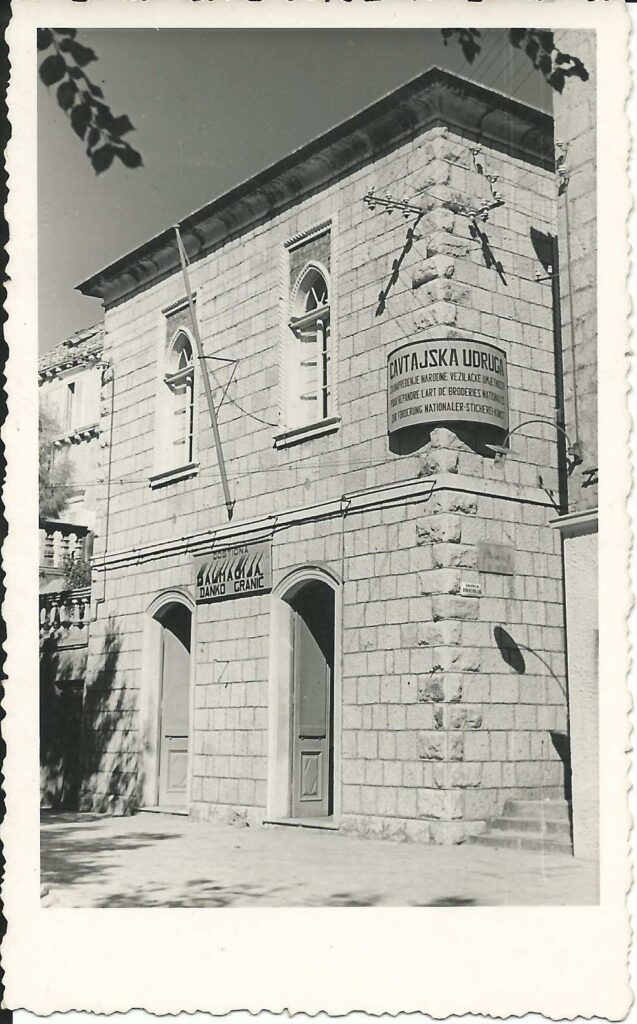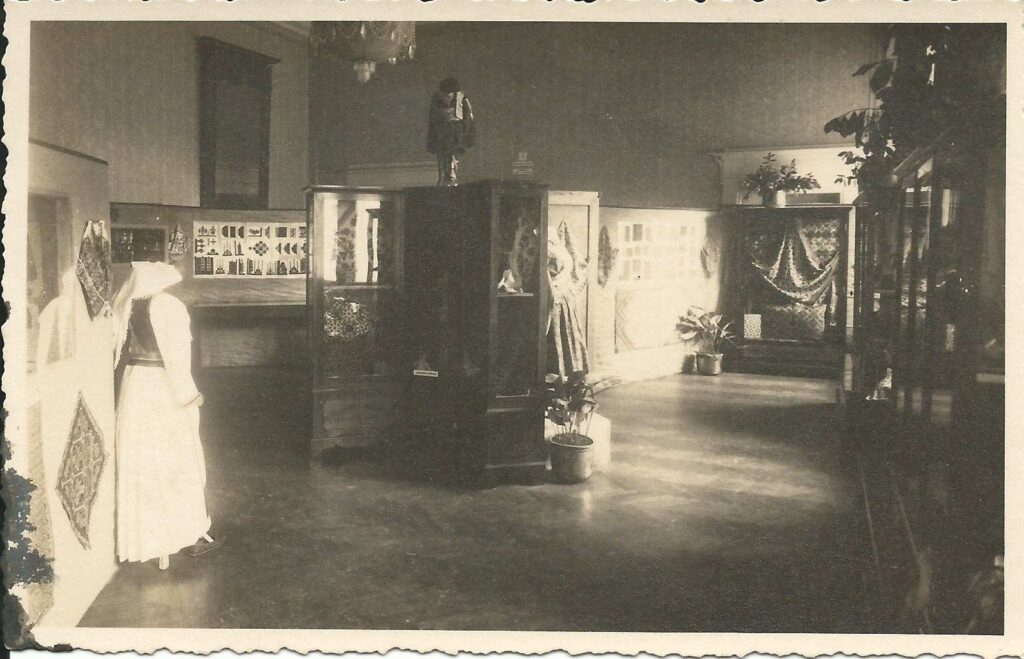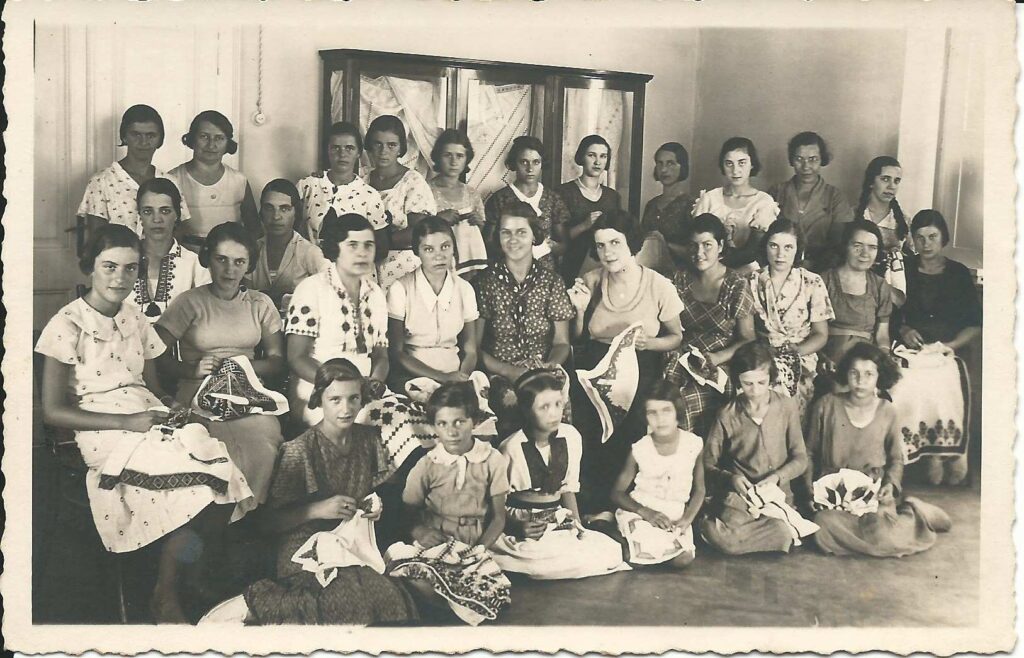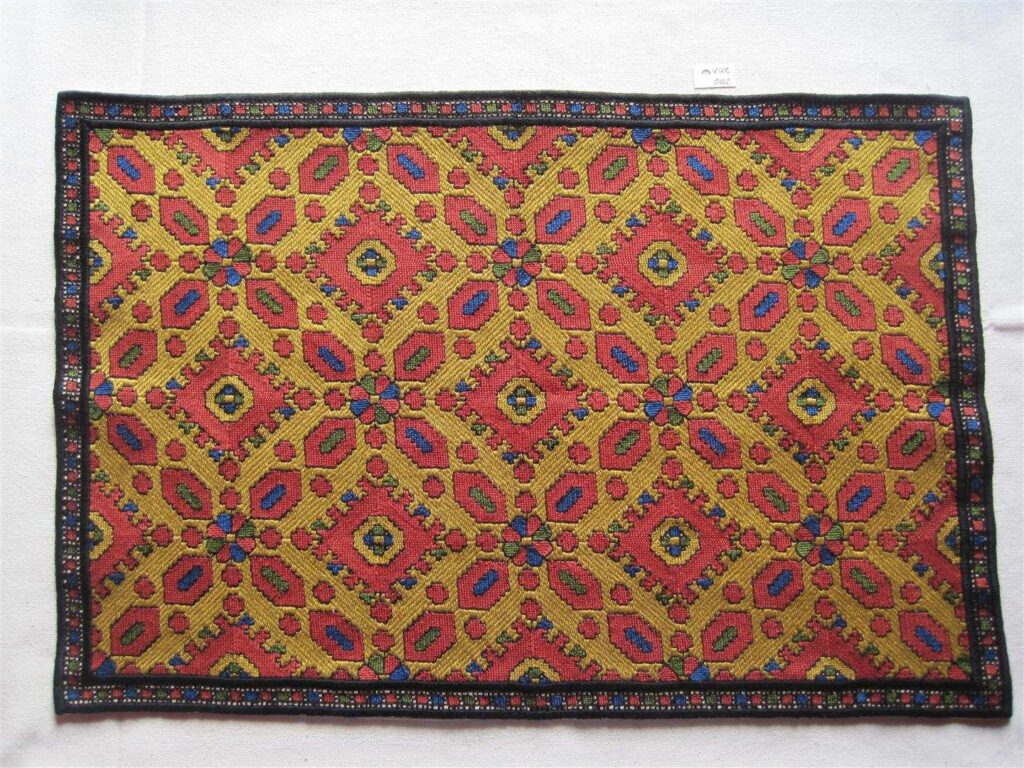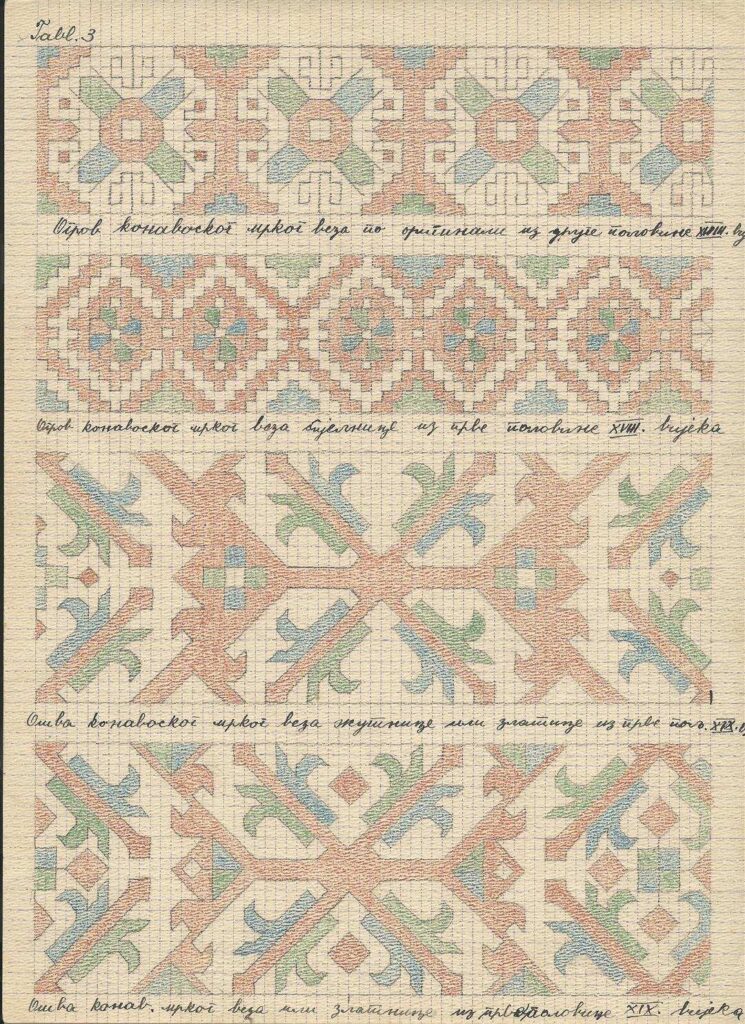A lover of folklore textiles, teacher Jelka Miš dedicated her life to researching, nurturing and preserving folk costumes and textile handicrafts. Her close relationship with Konavle, where she collected samples of folk handicrafts, made objects of high artistic range and taught the art of handicrafts undoubtedly makes her an extremely important person in preserving the richness of Konavle handicrafts.
Jelka Miš was born in Dubrovnik in 1875 on October 2. In her early childhood, she lost her mother Ana née Lučić and father Vlaho, a shoemaker, and was raised by her mother’s sister Marija. After finishing primary school, from 1889 to 1893 she attended the famous Dubrovnik Preparandija (Dubrovnik School of Teacher Education). At that time, she already showed a strong interest in folk embroidery in home economics, where embroidery was taught, and by studying the techniques of performing the work, she also proved to be an excellent embroiderer.
During 1893 and partly in 1894, she served as a temporary teacher in Vodice and Hvar, and at the end of 1894, life brought her to Konavle. She was placed in Mrcine in the one-class Mixed Public School, where she worked until 1908.
As the first teacher of this elementary school, she expressed her enthusiasm and dedication to educating children. In addition to regular classes in the morning and afternoon, she gathered young people in the evenings, taught them about the importance of heritage, and introduced them to important literary works. She taught the girls handicrafts, but she also organized home workshops where she also taught older women, from whom she in turn learned all variations of Konavle embroidery. It is in Mrcine that she comes into close and everyday contact with the Konavle embroidery, and as a passionate lover of textile handicrafts, becomes enchanted by it. That is when her systematic collection and processing of samples of Konavle embroidery and parts of women’s costumes began, which, as time will show, will be crucial in preserving ancient embroidery techniques.
Jelka Miš visited villages in Konavle and bought from her modest teacher’s salary, valuable copies of ethnographic material which she saved from disappearing. In total, she managed to collect about 200 different samples of ogrova, ošvi, zaveza (embroidered parts of women’s costume) and restored the then somewhat forgotten mrki vez (so called black embroidery) technique from the 18th and 19th centuries. Another significant contribution is the purchase of one of the last copies of a wedding women’s embroidered apron, with an ornament na sunašca and na kola (sun and cart) as well as examples of Dubrovnik lace known as Renaissance lace Point de Ragusa, which until then remained only fragmentarily preserved in Konavle blankets. In addition to the Konavle embroidery, Jelka Miš was also interested in other embroideries from the wider area, so during school holidays she travelled to areas from northern Dalmatia, Bosnia and Herzegovina, Macedonia, Kosovo, Vojvodina, Serbia, where she studied and collected folk embroidery and sometimes held courses on folk embroidery for educators.
Jelka’s thoroughness in collecting original parts of folk costumes and handicrafts is evidenced by the documentation on the terminology, purpose, techniques, types and process of production, materials and colours, and data on the historical, traditional and symbolic context recorded. Jelka Miš meticulously redrew patterns and motifs in the form of a technical drawing and then made them using original techniques, and the pattern templates were used by many embroiders.
In 1922, Jelka Miš, on the foundations of the Cooperative for the Improvement of Folk Art – Pčelica, founded the Cavtat Embroidery Association, which brought together several generations of girls from Cavtat and Konavle villages. In addition to Konavle embroidery, they also made other embroideries originating from neighbouring areas and useful objects such as cushions, table cloths and bags, respecting the authentic technical performance, ornamentation and colour of embroidery, which resulted in objects of high aesthetic value.
The students’ works were sold on local and foreign markets and exhibited at many world exhibitions in Copenhagen, The Hague, Paris, Rotterdam, Washington and New York. The embroiderers received compensation for their work which allowed them to contribute to their families. With the rest of the money from the sale of the embroidery, they managed to buy and adapt a house in Cavtat on the waterfront at Bukovčeva 1, which was equipped with display cases and served as an exhibition salon. The archive of the Cavtat Embroidery Association contained about 800 samples of folk embroidery, about 300 drawings and five mannequins.
The Cavtat Embroidery Association operated until the Second World War, and was officially shut down in 1946. Until 1962, the collection of the Association was stored in the Baltazar Bogišić Collection in Cavtat, and in 2004 it found its permanent home as an independent collection within the Konavle County Museum.
Jelka Miš also founded the Atelier for Folk Embroidery in Dubrovnik, where she lived and continued her work, at her passing she left the collection of the atelier to the City. As a result, the National Museum in Dubrovnik established its own ethnographic department, from which an independent institution of the Ethnographic Museum emerged after the Second World War. Jelka Miš died on February 8, 1956, at the age of 81, leaving a legacy of rich collections with which she indebted Konavle, but also the entire Dubrovnik area.
